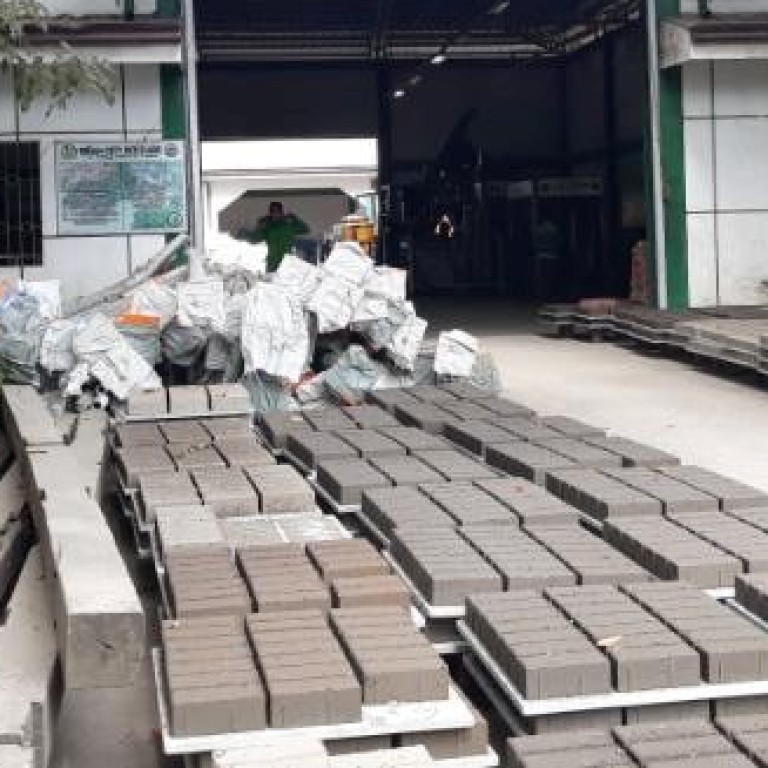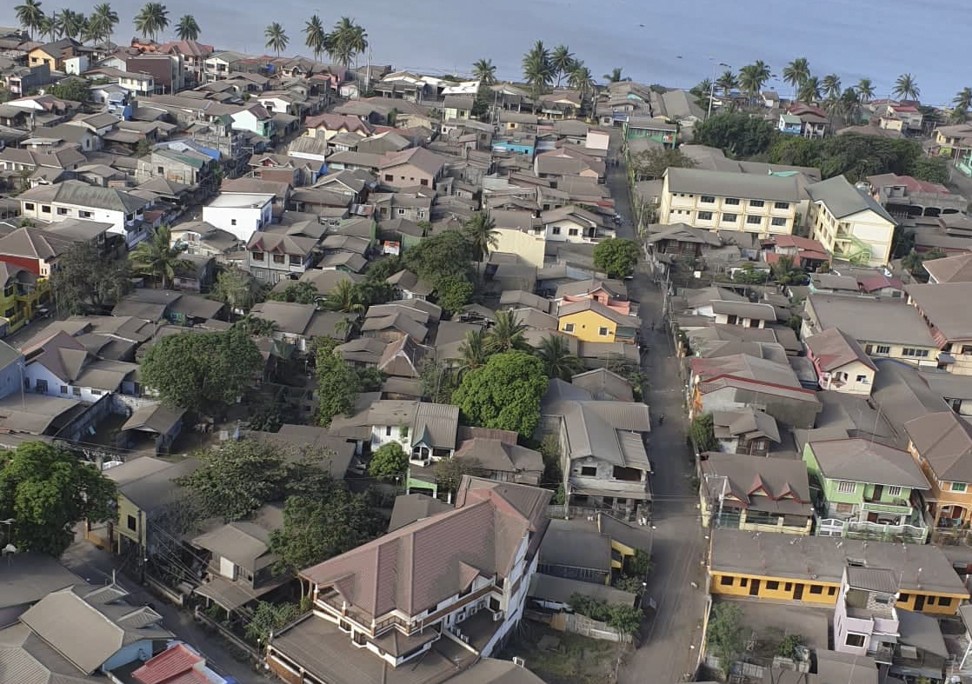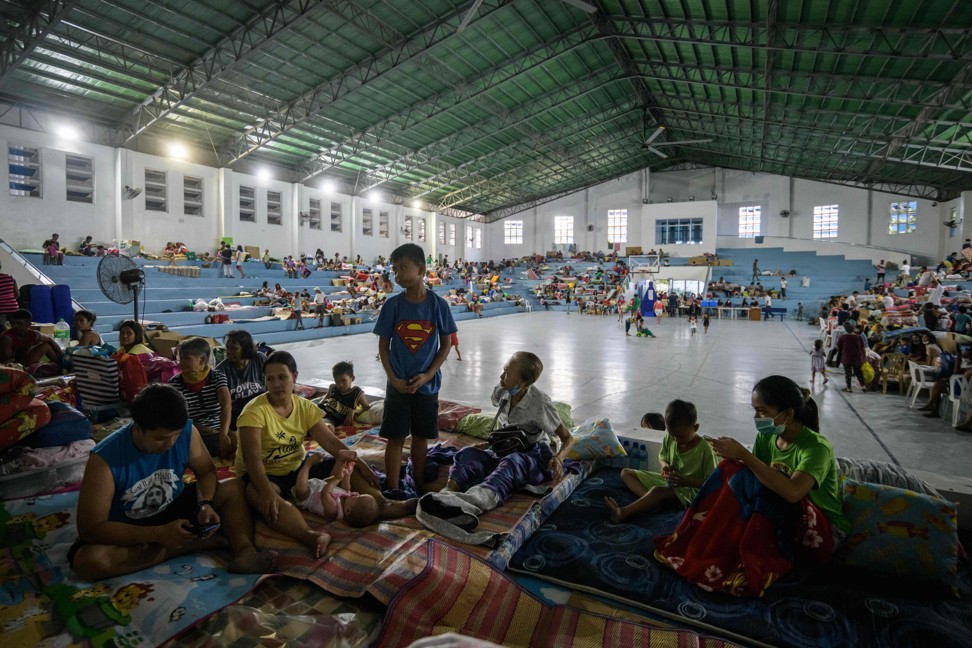
Taal Volcano: Philippine city turns ash into bricks to aid rebuilding efforts
- A city neighbouring the province where Taal Volcano is located is collecting ash to turn them into bricks at a state-owned factory
- The facility can produce up to 5,000 bricks a day which will be used to rebuild schools damaged by the eruption
The mayor of Biñan, in the neighbouring province of Laguna, has ordered residents to collect ash blanketing homes, cars and roads and put it in sacks to be sent to a state-owned factory and turned into bricks.
“When the ash came, we thought we’d exchange the white sand which we mix with plastics to be converted into bricks with ash. We did it and they came out sturdy,” said Biñan Mayor Walfredo Dimaguila, 48.
The facility can produce up to 5,000 bricks a day which will be used to rebuild schools damaged since Taal, one of the Philippines’ most active and deadliest volcanoes, began spewing massive clouds of ash, steam and gas on Sunday.
“What we plan is to turn them into hollow blocks and bricks and sell them to interested companies,” said Dimaguila, adding that the proceeds would be donated to people directly affected by the restive volcano.
Several buildings in lakeside towns near Taal volcano, located about 70km (45 miles) south of the capital, were destroyed as heavy ash weighed makeshift roofs and toppled trees, and tens of thousands of people have fled their homes.
Some of the evacuees are unsure if they have home and livelihood to return to.
Taal Volcano: 82,000 displaced as danger zones become ‘ghost towns’
“When Batangas is in recovery, we will bring the bricks there for building schools, community halls and livelihood centres so what we can give back what Taal has given us,” Dimaguila said, referring to the province where Taal is located.
“The misfortune of our neighbours in Batangas is there. Let’s transform this into opportunity,” Dimaguila said.
The Taal Volcano has been emitting weaker ash and steam explosions since the start of its eruption last Sunday. But despite the seeming lull, continuing volcanic quakes, the drying of the crater lake and other signs indicate magma was moving beneath, officials say.
Government scientists warn that a more hazardous explosive eruption could happen, even if the volcano’s eruption appeared to be waning.
“We have not seen yet the most hazardous eruption of Taal Volcano,” said Renato Solidum, head of the Philippine Institute of Volcanology and Seismology.
More than 100,000 residents have been forced to evacuate from high-risk areas now under a security lockdown, and soldiers and police have been stopping desperate villagers from returning to retrieve belongings and save their livestock.
Taal Volcano: as thousands flee ash-covered towns, some decide to stay home
The total population within the radius of a 14-kilometre danger zone is estimated at nearly 460,000, according to United Nations office for the Coordination of Humanitarian Affairs.
Many of the displaced residents were staying in public gyms and schools that have been turned into evacuation centres, while others sought shelter in homes of families.
“It’s very noisy here and you can hardly get rest,” said Merlinda Villanueva, a refugee at an evacuation centre in the town of Malvar who has lived on Taal Volcano island all her life. “I don’t get to sleep much at night. I think about my house, about the beautiful Taal Volcano and I feel very sad.”
While residents are allowed to briefly check on their houses and properties in high-risk areas during the day, police later make rounds to make sure they leave.
“We go back to get whatever we can salvage from our homes,” said Hilario Barion, a 37-year-old fisherman from Agoncillo town, one of the most devastated.
“But there’s nothing much to retrieve,” said the father of two teenagers. “Our house has collapsed from the weight of the ash fall and everything is covered in ash.”
Junior Domingo Nosete, 62, who has seven children and three grandchildren, said his family fled when the eruption began.
He goes back to their house at the shore in Tanauan during the day to clean and try to fish.
“We need to find a way to find food for ourselves. We can’t just rely on relief supplies,” he said. “We need to try to stand up on our own for as long as possible.”
Villanueva said she hoped they could return to their home on the island, but admitted it was not likely possible any more after President Rodrigo Duterte declared Volcano Island a no man’s land and ordered officials to find permanent relocation for the displaced residents.
“We also don’t want to take the risk,” she said. “Who wants to die?”




